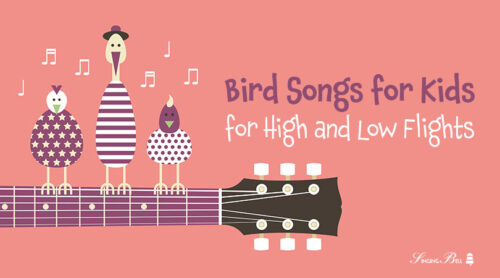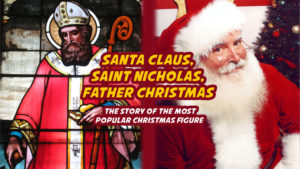

Do you play the guitar or the piano? Would you like to accompany children singing with an instrument, but you feel your skill level is low or you are a beginner at it? There’s already a repertoire for you!
Here you can find 20 nursery rhymes you can play along, which use only 2 chords. They are also ideal for you to teach easy 2-chord children’s songs to your piano or guitar students. Have fun and remember you can find even more tunes with 2 chords, 3 chords and 4 chords.
Table of Contents
- Billy Boy
- Oats, Peas, Beans, and Barley Grow
- Ten in the Bed
- Here We Go Looby Loo
- The More We Get Together
- Hush, Little Baby
- The North Wind Doth Blow
- Three Blind Mice
- Here We Go Round The Mulberry Bush
- Incy-Wincy Spider
- Rain, Rain, Go Away
- Merrily we roll along
- Row, Row, Row your Boat
- Head, Shoulders, Knees and Toes
- Five Little Monkeys
- The Wheels on the Bus
- London Bridge Is Falling Down
- Rock-a-bye Baby
- Pont d’Avignon
- Mary Had a Little Lamb
- 2-Chord Nursery Rhymes – Video Playlist
1.
Billy Boy
“Billy Boy” is a traditional folk song and nursery rhyme found in the United States. It is a variant of the traditional English folk song “My Boy Billy,” collected by Ralph Vaughan Williams and published by him in 1912 as number 232 in Novello’s School Songs.
Printable lyrics, score and free instrumental download, here.
2.
Oats, Peas, Beans, and Barley Grow
“Oats, Peas, Beans, and Barley Grow” is a singing game where children follow the text with moves in order to learn the seeding process. The tune of the song seems to be composed by John Playford (1623–1686/7) and appears in Joshua Cushing’s book “The Fifer’s Companion” (1790).
Printable lyrics, score and free instrumental download, here.
3.
Ten in the Bed
“Ten in the Bed” is found in many cultures worldwide and it’s used to help children count backwards from ten to one.
Printable lyrics, score and free instrumental download, here.
4.
Here We Go Looby Loo
“Here We Go Looby Loo” is an an English-language children’s song, popular both in the U.S.A. and the United Kingdom. As an action game, children follow the lyrics moving their hands, their feet and finally the whole body.
Printable lyrics, score and free instrumental download, here.
5.
The More We Get Together
“The More We Get Together” is a traditional British folk song and popular children’s song dating to the 18th or 19th century. Like “Did You Ever See a Lassie?”, its tune was taken from a 1679 Viennese tune by Marx Augustin, “Oh du lieber Augustin”. The rhyme has been used in various ads, jingles and trailers.
Printable lyrics, score and free instrumental download, here.
6.
Hush, Little Baby
“Hush, Little Baby” is a traditional lullaby, thought to have been written in the Southern United States. The lyrics promise all kinds of rewards to the child if he or she is quiet. The simple structure allows more verses to be added ad lib. The song has been performed and recorded by many artists including Joan Baez, Regina Spektor, Nina Simone, The Weavers and the Mormon Tabernacle Choir.
Printable lyrics and free instrumental download, here.
7.
The North Wind Doth Blow
“The North Wind Doth Blow” is an English nursery rhyme whose origins date back to the 16th century. In its lyrics, the robin needs to get warm when the winter comes. Because of its reference to the cold, it is a good starting point to discuss with children the seasons and their impact on wildlife.
Printable lyrics and free instrumental download, here.
8.
Three Blind Mice
“Three Blind Mice” is a nursery rhyme which can be sung as a round. (see also “Banuwa”, “Frère Jacques”, “Kookabura”, “Row, row, row your boat” and “Jack and Jill”). A version of this rhyme was published in 1609 by Thomas Ravenscroft, an English musician, theorist and editor, notable as a composer of rounds. It seems that the text was a reference to the execution of three Protestant bishops by order of the Queen Mary I of England, although their “blindness”, seen by Catholics, could be the Protestantism.
Printable lyrics and free instrumental download, here.
9.
Here We Go Round The Mulberry Bush
“Here We Go Round The Mulberry Bush” is is an English language nursery rhyme and singing game. It is also often titled “Mulberry Bush” or “This is the Way”. This rhyme is a singing game, which means it is associated with a set of actions and movements which help children to learn corresponding activities. The tune of the song is the same as the one of “Wheels on the bus”.
Printable lyrics, score and free instrumental download, here.
10.
Incy-Wincy Spider
“Incy-Wincy Spider” (also known as “Eency-Weency Spider” or “Itsy-Bitsy Spider”) is a traditional song about a spider that tries to climb up the waterspout and the troubles that occur on her way. It is usually accompanied by a sequence of gestures that mimic the words of the song. The song is sung by and for children in countless languages and cultures. In Germany the melody is used for the song “Spannenlanger Hansel”.
Printable lyrics, score and free instrumental download, here.
11.
Rain, Rain, Go Away
“Rain, Rain, Go Away” is a nursery song about driving away the rain, so the children can play outside. The lyrics are known at least from the 17th century, included in a collection of proverbs. The text of the song is offered for improvisation or adaption by the children using different names or places where the rain can go.
Printable lyrics, score and free instrumental download, here.
12.
Merrily we roll along
The lyrics and the melody of “Merrily we roll along” are based on the chorus of a folk song called “Goodnight Ladies”. The composer, Edwin Pearce Christy, lived in 19th century and the song had been written for a minstrel show. The verse of the original song was “Goodnight, ladies! Goodnight, ladies! Goodnight, ladies! We’re going to leave you now”.
Printable lyrics, score and free instrumental download, here.
13.
Row, Row, Row your Boat
“Row, Row, Row your Boat” was first recorded as a modern tune in 1881 by Eliphalet Oram Lyte, although it is not clear if he is the composer or adapter of the melody. The song has been heard several times in films and TV programs (Star Trek V, Eternal Sunshine of the Spotless Mind, Dirty Harry, HBO’s series Oz and Deadwood, MTV series Teen Wolf, etc.).
Printable lyrics, score and free instrumental download, here.
14.
Head, Shoulders, Knees and Toes
“Head, Shoulders, Knees and Toes” is a children’s song sung to the tune of the traditional folk song “There is a Tavern in the Town”, which first appeared in the 1883 edition of William H. Hill’s Student Songs.
Printable lyrics, score and free instrumental download, here.
15.
Five Little Monkeys
“Five Little Monkeys” is a “repetitive” nursery rhyme, that means the text stays same for every turn, with only a small part of a verse changing every time. Other songs in the same form are “Baby Bumblebee”, “If You’re Happy and You Know It”, “Rain, Rain, Go Away”, “Wheels on the Bus”, “Old MacDonald had a Farm” and “Finger Family“.
Printable lyrics, score and free instrumental download, here.
16.
The Wheels on the Bus
“The Wheels on the Bus” is a song known already in 1939 (published in the “American Childhood” magazine, vol. 25). It is one more song with repetitive parts where the text stays almost the same from verse to verse with only one or two words changing (see also “If you are happy and you know it” , “Finger Family“, “Baby Bumblebee”, “If You’re Happy and You Know It” , “Rain, rain, go away”, “Old MacDonald had a farm”).
Printable lyrics, score and free instrumental download, here.
17.
London Bridge Is Falling Down
“London Bridge Is Falling Down” is a traditional nursery rhyme whose earliest known records are from the 17th century. The song recounts the attempts to repair the bridge of London. The melody probably comes from a medieval theme, but its modern version formed in the late 19th century.Matilda of Scotland, Henry I’s consort, and Eleanor of Provence, consort of Henry III, had the responsibility of building or repairing works on early 11th and 13th century respectively and are two of the candidates for the “fair lady” of the chorus.
Printable lyrics, score and free instrumental download, here.
18.
Rock-a-bye Baby
“Rock-a-bye Baby” ‘s melody comes from a variant of the English satirical ballad “Lilliburlero”, a march that seems to have been known at the time of the 17th-century English Civil War. In Derbyshire, England, local legend has it that the song relates to a local character in the late 18th century, Betty Kenny (Kate Kenyon), who lived with her charcoal-burner husband, Luke, and their eight children in a huge yew tree in Shining Cliff Woods in the Derwent Valley, where a hollowed-out bough served as a cradle.
Printable lyrics, score and free instrumental download, here.
19.
Pont d’Avignon
“Pont d’Avignon” is a famous medieval bridge in the French town of Avignon. This old song, known from the 15th century, talks about a dance on it. In fact, the dance took place under the bridge and not on the bridge (“Sous le Pont d’Avignon”, not “Sur”).
Printable lyrics, score and free instrumental download, here.
20.
Mary Had a Little Lamb
“Mary Had a Little Lamb” tells the true story of Mary Tyler, a young girl whose brother persuaded her to go to school with her little lamb, as she did. The nursery rhyme was first published by the Boston publishing firm Marsh, Capen & Lyon, as an original poem by Sarah Josepha Hale on May 24, 1830, and was inspired by an actual incident. It is also famous for being the first thing recorded by Thomas Edison on his newly invented phonograph in 1877, making the rhyme the first instance of recorded verse.
Printable lyrics, score and free instrumental download, here.
2-Chord Nursery Rhymes – Video Playlist
Watch all the songs of this article on this video playlist:
Did you like this post? Rate it!
You may also like:
Rain, Go Away | Top 10 English Nursery Rhymes
The Best Lullabies | 10 Bedtime Songs to Sing your Little One to Sleep










